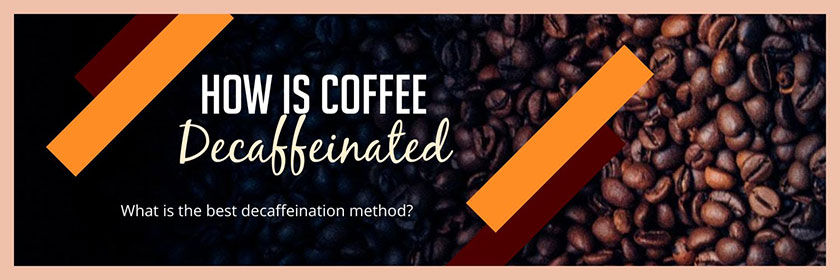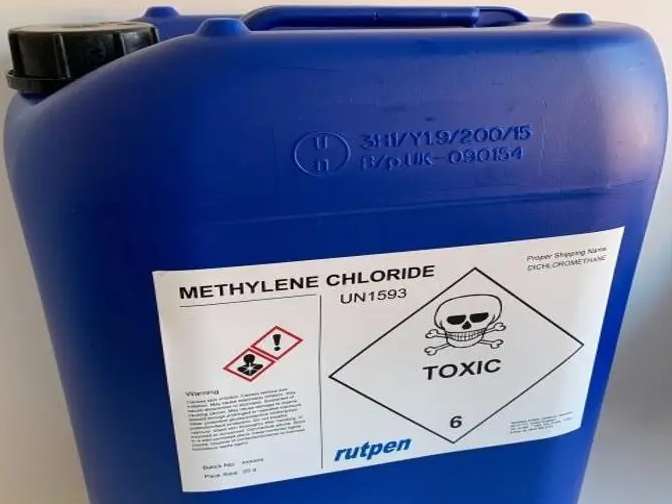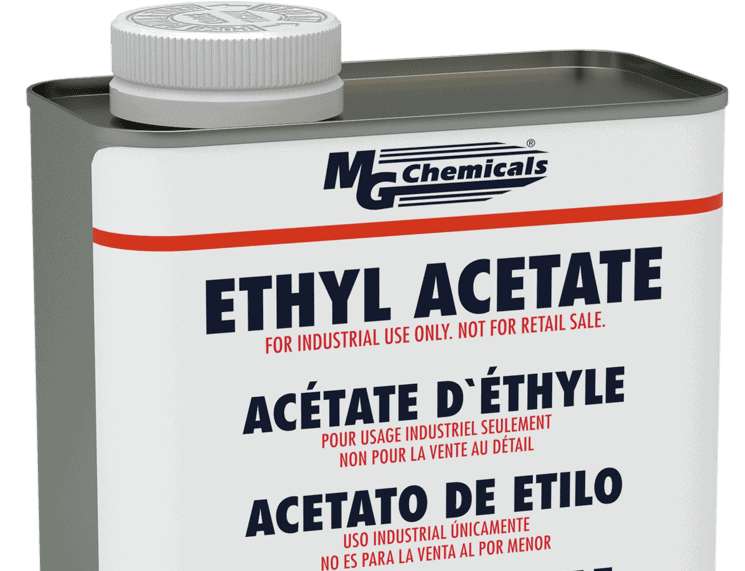We love espresso here, at BrewEspressoCoffee.com. We love it so much that sometime we get that third, or fourth double espresso shot late in the afternoon. And as much as we enjoy the energy boost that caffeine gives us, sometimes it's just too much.
I brew my afternoon shots with decaf, this way I can get a good night sleep, and function properly next day. But getting good decaf espresso beans is a challenge, because more than half of the decaf blends are bland, or even worse. There is also the health aspect, since decaffeination is a complex process, that involves using chemicals.

Is Decaffeinated Coffee Bad for You?
Caffeine, a natural stimulant found in coffee, tea, chocolate, and guarana, is the most popular psychoactive drug.
The caffeine in coffee is definitely good for you. It helps your body burn fat, boosts energy levels, and elevates mood. However, in large quantities caffeine can cause more problems than it solves such as: insomnia, anxiety, heart palpitations, headaches, and more.
Decaf coffee is a popular choice for people who want to cut down on caffeine, but does it have any health benefits or drawbacks?
Is Decaf as Healthy as Regular Coffee?
Coffee, benefits us in more ways, aside from the energy boost from the caffeine. These benefits are attributed to its high content in antioxidants. Coffee contains antioxidants called polyphenols. These compounds may help protect against certain types of cancers. Decaf coffee contains almost the same amounts of antioxidants as regular coffee.
In the process of decaffeination, depending on the method used, coffee might lose some of its antioxidants, however this loss is minor. If we take in consideration the benefits of cutting down on caffeine, the antioxidant loss is negligible.
So, if we really need to be nitpicky, yes it loses some of the antioxidant power, 10 to 20%, but on the other hand, you can drink a few more cups of coffee, if you want the antioxidants… Without the side effects of the caffeine.
Contrary to a quite popular opinion, decaf coffee does not cause and harmful effects, according to this research study.
Does Decaffeination Use Harmful Chemicals?
Solvent-based decaffeination process uses a chemical solvent to remove the coffee from its beans.
The chemicals in the solvent selectively bond with the chemicals in the coffee beans. Once all the caffeine has bonded with the solvent, Coffee beans are heated to evaporate the solvent the caffeine.
Historically, this process was incredibly toxic. Ludwig Roselius invented the first commercial decaffeination process, based on benzene as a solvent. The use of benzene has diminished in the industry, due to health concerns, but the stigma around chemical solvents remained.
If this is a concern for you, the best is to ask what decaffeination method the brand, or the company you are buying from uses.
But let's take a look at the chemicals used in decaffeination and see how much of a risk they pose.
Methylene Chloride
Some of the decaffeination methods do use toxic chemicals in the process. One of the debated chemicals is methylene chloride, (or dichloromethane). Members of the coffee community and some consumers have raised concerns about the use of methylene chloride in the decaffeination process.

Even small amounts of methylene chloride – 200 parts per million (ppm) in the air pose health risks. It can slow down the central nervous system and affect attention and hand-eye coordination. Mild exposure can also lead to symptoms such as: headache, drowsiness, lightheadedness, irritability, coughing or wheezing.
However, FDA considers methylene chloride safe if the concentration in the coffee beans is under 10 ppm. Here is the FDA document on methylene chloride.
An investigation conducted by The Clean Label Project has found a considerable number of the tested decaf blends containing traces of methylene chloride. The content ranged from 50 parts per billion to a little above 90 parts per billion, which is way less than the FDA requirement.
Ethyl Acetate
Ethyl acetate is less toxic than methylene chloride, and FDA deems it safe for decaffeination. If you research about ethyl acetate toxicity, you will certainly find documentation that is not a safe compound. However, the levels present in decaf coffee are safe beyond doubt.

There is some chatter that the ethyl acetate used in decaffeination is synthetic, so it's less safe than the natural ethyl acetate extracted from plants, but this is just another exaggeration. Again, even if the synthetic version was less safe than the natural extract, the levels present in coffee beans are so low that are close to inexistent.
When the ethyl acetate is obtained naturally from fermenting sugarcane molasses, the process is called Sugar Cane decaf.
Remember, both Ethyl Acetate and Methyl Chloride are very volatile compounds that evaporate extremely easy. However, if you are concerned about the use of these in decaf, you might want to ask the barista at your local coffee shop what kind of beans they use in their decaf.
Methods of Decaffeinating Coffee
The most used four methods for removing caffeine from coffee beans are:
- Organic Solvent Decaffeination,
- Supercritical Carbon Dioxide,
- Swiss Water Decaffeination, and
- Triglyceride Process.
The coffee beans are used in their green state, unroasted. It's important that the coffee beans are in their raw green state during decaffeination, in order to prevent flavor loss.
Historically, there was another method, which could be classified as a solvent decaffeination, the Roselius method. The Roselius method was the first commercial decaffeination method, but this method is no longer used due to health concerns posed by the use of benzene as the caffeine solvent.
Organic Solvent Decaffeination
The solvent methods call for the use of either methylene chloride or ethyl acetate. These scientific names can sound a bit scary, but both these solvents were deemed healthy by the US Food and Drug Administration. We shown in the previous section that the these compounds are found in very low quantities, so the debates over their safety are irrelevant.
The Direct Solvent Process
For the direct solvent process, the beans are either soaked in water or steamed before being repeatedly exposed to either methylene chloride or ethyl acetate.
This method uses ethyl acetate, which is advertised as a “natural” way to remove caffeine from coffee, since it is naturally present in fruits.
After the beans have been exposed to the solution for about 10 hours, they are usually steamed to remove the remaining solvent.
The Indirect Solvent Process
To begin the indirect solvent process, the beans are soaked in boiling water, which removes all the water-soluble components, including caffeine and flavor compounds. The beans are now removed from the liquid, which now contains all the water-soluble contents of the beans.
The coffee extract then is mixed with the solvent, for this method is usually methyl chloride, but ethyl acetate can be used as well. The caffeine then will be removed by heating up the extract, so that the methyl chloride and caffeine evaporate from the mix. Because of the high volatility of the methyl chloride, the coffee extract retains all of the flavor compounds.
This extract will the base for soaking the next batch of green beans. This cycle of reusing the coffee extract has the advantage of minimizing the flavor loss. Since the extract is a saturated solution, all of the soluble solids in beans will not dissolve anymore. The only compound that will dissolve is the caffeine, since we are removing it from the extract every subsequent batch.
The indirect method is the most used of the two.
The Supercritical Carbon Dioxide Process
The carbon dioxide supercritical method begins by steaming green coffee beans to soften them up. This allows the solvent to penetrate the beans easier.
The coffee beans are placed in a pressurized stainless steel vessel, and soaked in liquid carbon dioxide for ten to twelve hours. Since CO2 is gaseous at normal pressure, the gas and the beans are kept at 300 atmospheres and 149 °F, (65 °C), to liquify the CO2. This increases carbon dioxide's density, causing it to behave like a liquid while still being a gas.
After twelve hours of soaking, the pressure is reduced, and the the caffeine-containing carbon dioxide then is removed from the container.
In a separate process the caffeine is removed from the gas, and the carbon dioxide is then funneled back into the stainless steel container for subsequent batches.
The CO2 is one of the best methods of decaffeination, since it only removes caffeine, and the flavor loss is minimal, compared to other methods. One of my favorite espresso decaf blends is Lavazza Dek. Lavazza Dek uses the CO2 decaf process, this is why this blend tastes like… coffee.
The Swiss Water Process
Swiss Water is a method that was developed in 1933, but it was only use commercially starting 1980.
In the Swiss Water process, green beans are soaked in green coffee extract.
Green coffee extract is a solution containing the water-soluble components of green coffee, less the caffeine. The green coffee extract is obtained by soaking green coffee beans in hot water, then filtering through an activated carbon filter to remove the caffeine molecules.
Swiss Water process is similar to the indirect solvent method. The coffee extract is a concentrate of soluble solids that is saturated. When green coffee is immersed in the coffee extract, only caffeine will dissolve, because caffeine was removed from the coffee extract.
The Swiss Water process is said to be the “cleanest” method of removing caffeine from coffee. However, the CO2 method is as clean as Swiss Water.
The truly special thing about the Swiss Water method is the special filter used when filtering the caffeine. The filter will only filter caffeine, and will let pass all of the soluble solids from the beans.
The Swiss Water company has a decaffeination plant in Vancouver, Canada.
Mountain Water Method
This method is similar to Swiss Water, and uses water only to dissolve caffeine. The only difference is the filter. The filter is proprietary and it was invented by Descamex, a Mexican coffee company.
Triglyceride process
The triglyceride process is the newest decaffeination process on the market, and it uses coffee oils as the caffeine solvent. Coffee oils are extracted from spent coffee grounds, and then used as a selective caffeine solvent.
Green coffee beans are soaked in a hot water/coffee solution to bring the caffeine to the surface. The beans are then transferred to another container and immersed in the coffee oil.
Triglycerides in the oils selectively bind to caffeine. After several hours, when the coffee oils would have dissolved all caffeine, but not flavor compounds, the oils are removed, and coffee beans are dried.
The caffeine is then removed from the oils, and then coffee oils are reused to decaffeinate another batch of beans. This is a direct-contact method.
Which Decaffeination Method Is the Best for Flavor?
There's a dilemma when it comes to decaf coffee, and that is flavor. Statistically, decaf coffee sucks. If you think about it, when you go through all of the steps to remove caffeine, you're bound to lose some of the flavors.
Some of the flavors are volatile, and they just disappear as we steam the beans. There is nothing we can do to prevent that from happening. We just need to accept the loss.
Some of the flavor, however, is lost during the decaffeination because of the incorrect processing. Decaffeinating coffee is expensive. It costs time, equipment, and coffee. Think about it. The first batches of decaffeinated beans are normally discarded, (indirect method, and Swiss Water method). What if a roaster decides to use those beans, and spread them into the next decaf batches? If the decaffeinated quantity is large enough, the effect will be minimal. However, small batches will taste horrible, if we don't discard the first two batches.
There is a lot of bad advice on the Internet, pointing at Swiss Water as the best tasting decaf. This is false. Roasters and people in the industry know that Swiss Water method doesn't yield the best tasting beans, but they don't chime in because it's bad for the business.
The reality is that the best tasting decaf beans are processed using the carbon dioxide method and methyl chloride method. Although it's hard to find this info on the Internet, I scoured it for you and here is a decently documented article that agrees with my opinion.
I should point out that roasting also plays a major role in the taste. When you look for great decaf beans for your espresso, there are two avenues to explore. The artisan roaster, and the large, reputable, International roaster.
As I said before, decaffeinating coffee is expensive. The small roaster is typically constrained by costs and quantity, so it's not that common to find great decaf beans by buying at your regular local roaster.
The large roasters will focus on cost saving, and blend consistency. Their beans need to have a consistent flavor profile, and not change from season to season. You might find better decaf beans exploring this avenue, but don't expect great quality beans, or single origin coffees. Large roasters will sell you blends without too much oomph, but that can pull passable shots.
I personally, will take a passable shot anytime in the afternoon, so I think from this perspective it's win.
Conclusion
If you want to cut down on your caffeine intake, look for CO2 processed coffee beans. The CO2 method preserves the coffee flavors and doesn't use chemicals in the decaffeination process.
Swiss water is also a healthy solution, but I personally rarely found good decaf beans processed with this method.
The solvent method is not unhealthy, I personally have used beans processed this way, and I do care about my health.
The triglycerides method is new and I did not get the chance to taste any coffees decaffeinated this way.
The future of decaf belongs to naturally low caffeine beans. Coffea charrieriana, or Charrier Coffee, is a caffeine free species discovered in Cameroon in 2008. The coffee industry started to breed this plant with Arabica varieties, in an attempt to create a low caffeine coffee plant, that has the Arabica flavor, and the low caffeine of the Charrier species.
